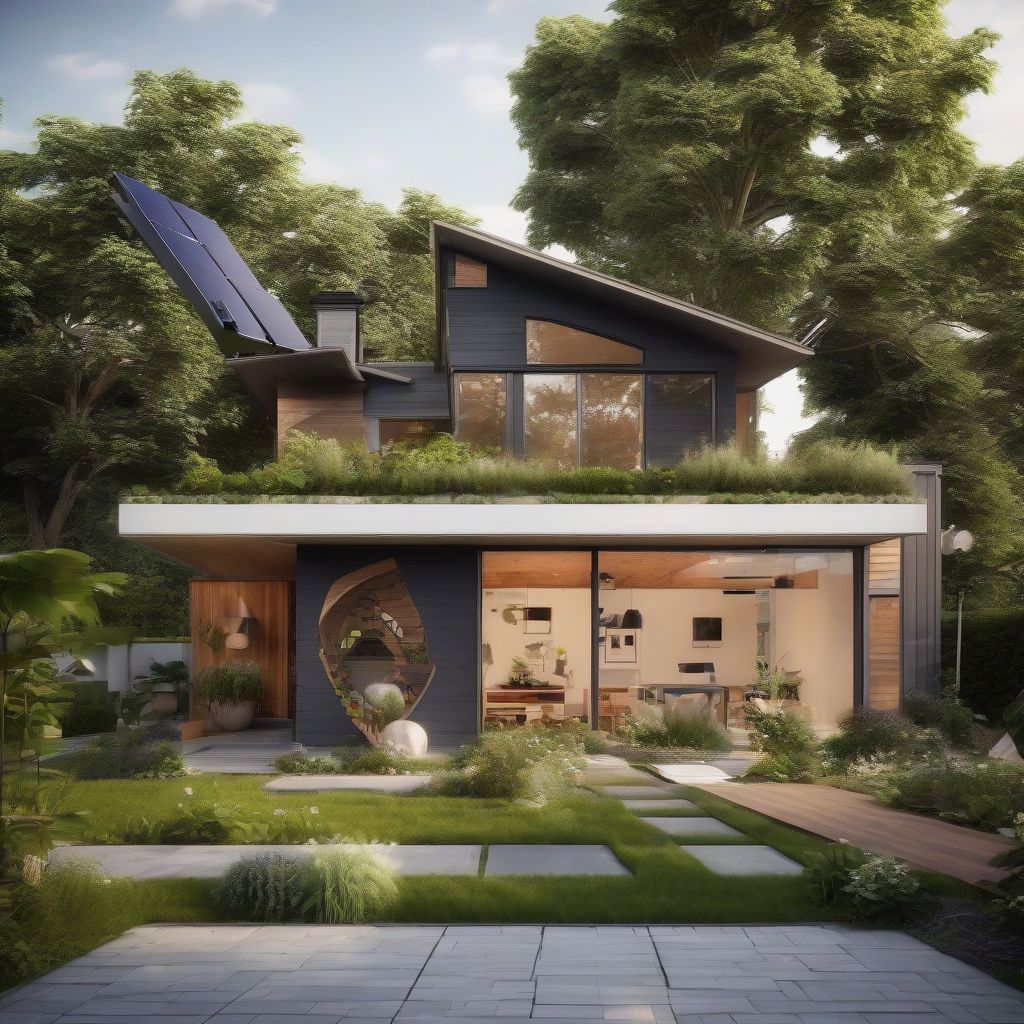Imagine a world where your home is powered entirely by the sun, wind, or water – no more reliance on fossil fuels, just clean, sustainable energy. This dream is becoming a reality for more and more homeowners, and it’s more achievable than you might think. Switching to 100% renewable energy isn’t just good for the environment; it can also save you money on your energy bills in the long run. This comprehensive guide will walk you through the steps involved in transitioning your home to 100% renewable energy, empowering you to make informed decisions and create a greener future for yourself and generations to come.
Understanding Your Energy Needs
The first step towards a renewable energy home is understanding your current energy consumption. Analyze your utility bills to determine your average monthly and annual usage. This will help you size your renewable energy system appropriately. Consider factors like the number of occupants in your home, the types of appliances you use, and your heating and cooling needs. Remember, as a nutritionist, I always emphasize the importance of understanding your baseline before making significant changes. Similarly, understanding your energy consumption is your baseline for a successful transition to renewable energy.
Conducting an Energy Audit
A professional energy audit can provide a detailed assessment of your home’s energy efficiency, identifying areas where you can reduce energy waste. This can involve checking for air leaks, assessing insulation levels, and evaluating the efficiency of your appliances. Reducing your energy consumption before installing renewable energy systems can significantly lower the overall cost of your transition.
Exploring Renewable Energy Options
Several renewable energy sources can power your home. Let’s explore some of the most popular choices:
Solar Power
Solar panels convert sunlight into electricity, making them a popular choice for homeowners. Photovoltaic (PV) systems are the most common type, and their costs have decreased significantly in recent years. Consider factors like roof orientation, shading, and available sunlight when evaluating solar power.
Wind Power
Wind turbines generate electricity from wind energy. While large-scale wind farms are common, smaller residential wind turbines are also available. Assess your property’s wind resource potential before investing in wind power.
Geothermal Energy
Geothermal systems utilize the earth’s natural heat to provide heating and cooling. These systems are highly efficient but can be expensive to install. Evaluate the geological characteristics of your property to determine the feasibility of geothermal energy.
Hydropower
If you have a flowing water source on your property, such as a stream or river, micro-hydropower systems can generate electricity. These systems require specific site conditions and permits.
Implementing Your Renewable Energy System
Once you’ve chosen the right renewable energy source for your home, the next step is implementation. This typically involves:
Choosing a Contractor
Selecting a qualified and experienced contractor is crucial for a successful installation. Obtain multiple quotes, check references, and verify certifications before making a decision.
Obtaining Permits
You’ll likely need permits from your local government to install renewable energy systems. Check with your local building department to understand the requirements.
System Installation
The installation process will vary depending on the chosen technology. Ensure that the contractor follows all safety regulations and best practices.
Connecting to the Grid
In most cases, you’ll connect your renewable energy system to the existing electricity grid. This allows you to draw power from the grid when your renewable energy system isn’t producing enough electricity, and you can sell excess electricity back to the grid through net metering.
Financial Incentives and Benefits
Several financial incentives can make switching to renewable energy more affordable. These include:
Federal Tax Credits
The federal government offers tax credits for homeowners who install renewable energy systems. These credits can significantly reduce the upfront cost of your investment.
State and Local Incentives
Many states and local governments offer additional rebates, tax credits, and other incentives for renewable energy installations. Research the available programs in your area.
Net Metering
Net metering allows you to sell excess electricity generated by your renewable energy system back to the grid, offsetting your energy bills.
 Renewable Energy for Your Home
Renewable Energy for Your Home
Long-Term Benefits of Renewable Energy
Beyond the financial incentives, switching to 100% renewable energy offers numerous long-term benefits:
Reduced Environmental Impact
Renewable energy sources produce little to no greenhouse gas emissions, helping to combat climate change. This is crucial for protecting our planet for future generations. Just as we strive for a healthy diet to nourish our bodies, renewable energy nourishes our planet.
Energy Independence
By generating your own electricity, you become less reliant on the traditional power grid and its fluctuating energy prices. This independence provides stability and peace of mind. Imagine the freedom of knowing your energy source is controlled by you, not external factors.
Increased Home Value
Studies show that homes with renewable energy systems can have higher resale values. This is an added benefit for your investment.
Conclusion
Switching to 100% renewable energy for your home is a significant investment, but it’s one that pays off in the long run. By reducing your environmental footprint, increasing your energy independence, and potentially saving money on your energy bills, you’re not just powering your home – you’re powering a brighter, more sustainable future. Start by assessing your energy needs, exploring the available renewable energy options, and connecting with qualified professionals. Every step you take towards a renewable energy future is a step towards a healthier planet and a healthier you. We encourage you to share your thoughts and experiences with renewable energy in the comments below. Let’s work together to create a greener world, one home at a time.



